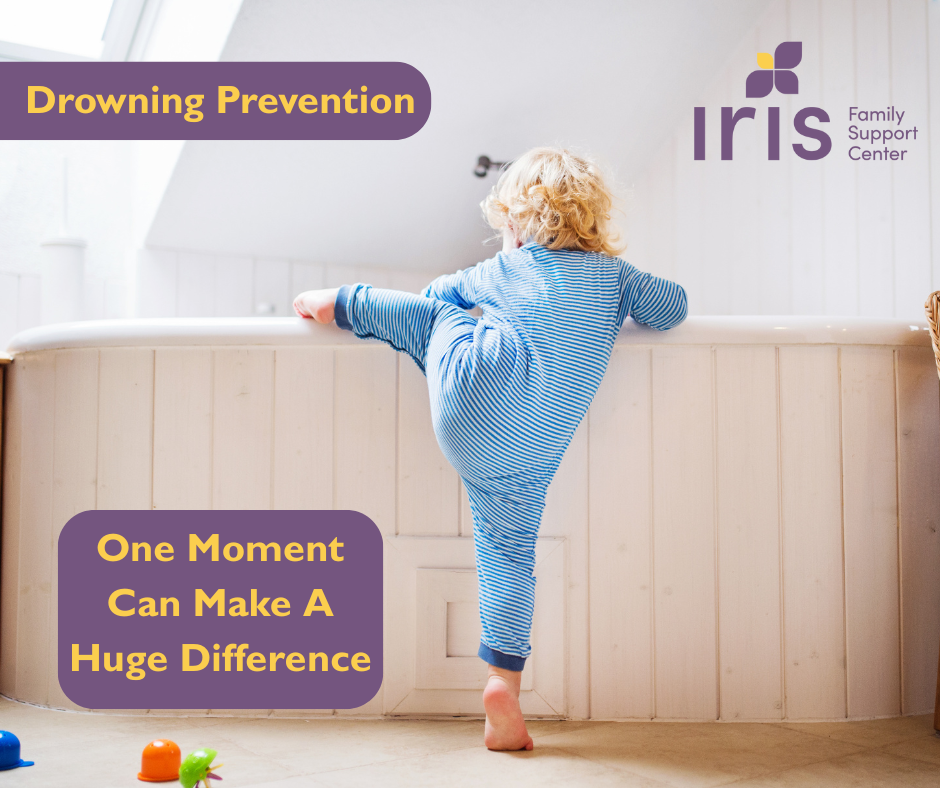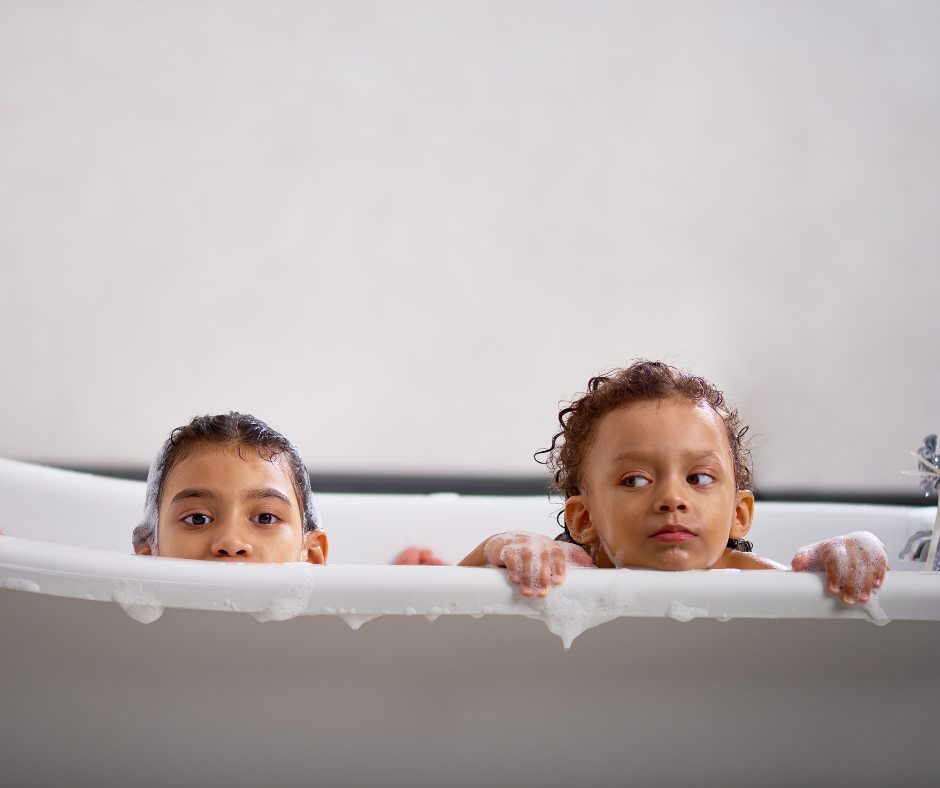Did you know children can drown in as little as 1-2 inches of water? Drowning can be an unknown danger as it happens quickly and silently. In Allen County, residential drowning is on the rise. Read to learn how you can prevent drowning and help other parents and caregivers keep their children safe.
These drowning prevention tips are courtesy of Iris’s Community Partners Program. Community Partners exists to walk alongside families, sharing tools, connecting to resources, and inspiring confidence so every child lives a happy, healthy life at home. To learn more about Community Partners and the support they provide, click on the image above or click here.
Water Safety In Your Home
-
An adult should always keep an eye on and stay within reach of an infant or young child while they are in the tub. Do not rely exclusively on bath seats or bath rings to keep your baby safe.
Most child drownings inside the home occur in bathtubs, and more than half of bathtub deaths involve children under 1 year of age. In many cases, bathtub drownings happen during a lapse in adult supervision.
-
When your young child is in the bathtub, stay within an arm’s reach of your child at all times. One moment can make a huge difference and using touch supervision can help ensure your child are safe. Have a towel and other things you need nearby so you can keep a hand on your baby at all times.
-
No amount of standing water is safe to have around the house. Be sure to empty buckets, bathtubs, or wading pools after each use, especially if you have infants, toddlers, or other young children in your home.
-
Watch children closely near wells, open post holes, or irrigation or drainage ditches. Children can drown in as little as 1-2 inches of water so just because there doesn’t appear to be much water, doesn’t mean drowning couldn’t take place.
-
Practicing water safety can also help prevent burns from hot liquid.
Avoid carrying a baby or young child and a hot liquid, like tea or coffee, at the same time. Also be careful about babies on people’s laps at the table for the same reason.
You can also prevent burns by making sure water in the home never gets too hot. If possible, set your water heater so the top temperature of water that comes out of the faucet is 120 degrees.
-
To learn more about keeping your child safe from drowning and water hazards in your home, visit the American Academy of Pediatrics website by clicking here.
Water Safety While Swimming
-
Do not allow children to swim without a lifeguard or adult watching over them. This person not only watches the swimmers in the pool, lake or ocean but also watch over the water and weather for any sudden changes that could be dangerous to the swimmers.
-
As a general rule of thumb, an adult should be within arm’s reach of young children at all times. Parents of older children should stay close and keep eyes on their children at all times.
-
Watch out for sudden changes in weather and water conditions. Watch for signs of severe weather and leave the water immediately at the first sign of lightning or thunder.
Do not return to the water until at least 30 minutes after the last sign of lightning and thunder in the area.
-
While swimming, children shouldn’t hold their breath for extended periods of time, this can cause drowning and has many other severe risks. Make sure your kids understand that competing who can hold their breath underwater can be dangerous and should not be done.
-
Young children or inexperienced swimmers should always wear a Coast Guard-certified life jacket around water. While there are many products that claim to help children stay afloat, such as water wings, floaties, pool noodles, etc., there is no true substitute for life preservers or lifesaving devices in a genuine emergency.
To verify that a life jacket is Coast Guard-certified, check the USCG Approval Number. If the first six digits of the number are 160.064 then it is a Coast Guard-certified life jacket.
Life jacket manufactures are required to include labels on their life jackets that you can use to help ensure it is the right fit for your child. Look at the label to make sure it is approved for your child’s weight range and the activity you’re using it for.
-
When a child sees a friend struggling to keep their head above water, their first instinct may be to jump in to help them which could potentially lead to them both drowning.
It is instead recommended to try to reach out to the struggling swimmer with a long object for them to grab hold of to be brought to safety. By doing this, children can help their friends without putting themselves at risk.
-
It is a good idea to show your children what a pool drain looks like and explain the importance of staying clear of them. Teach children to stay away from these areas, especially if a drain is missing a cover or appears to be broken. A child’s hair, swimsuit or even limbs could become stuck in a broken or faulty drain, which could lead to drowning or serious injury.
-
Whether you’re swimming in a pool, ocean or lake, stay within the designated swim areas. Never encourage a child to swim in areas of water that are deeper than their abilities will allow.
When swimming in a lake or ocean, always follow local guidelines. These were established by people who are familiar with that area of water and they have knowledge of how it changes from day to day to make wise up-to-date safety recommendations.
-
Alcohol impairs judgement, coordination and balance. It can also affect a person’s ability to swim well and can even lower body temperature. Not only can it cause you to be distracted, but it could leave you unable to function appropriately during an emergency situation.
-
While you may do everything you can to help your children swim safely, accidents can still occur.
If a drowning incident or pool-related accident occurs, bystanders are typically the first available to respond. For a parent supervising children, learning lifesaving techniques, including CPR, can help ensure everyone remains safe.
-
Backyard pools should be surrounded on all sides by a fence that’s at least 4 feet high, has a self-latching and self-closing gate, and is not climbable.
How To Help A Distressed Swimmer
-
Shout out for help.
-
Throw the swimmer a life jacket or flotation device.
-
Try to reach them with a long pole to pull them to safety.
-
Do not enter the water unless absolutely necessary. Proceed to seek medical attention after.





